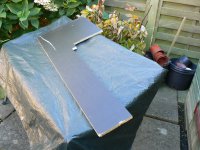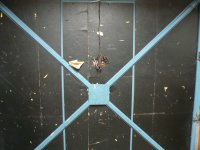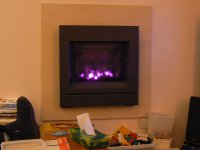The first use, last night, will have put a lot of its heat into the house structure. There will be loss overnight, but perhaps less than you put in.
In 1987, we bought a small house with storage heaters as its only heating. Once we'd got the things hot, after a few days, we had a warm house, that stayed warm 24/7. Having grown up in a cold house, with ice on the inside of the windows on winter mornings, this was bliss. Even better when we replaced the storage heaters with new ones, took us a while to get the temp down again.
It occurs to me, that the house itself becomes part of the heat storage. With the heating on all the time, the structure becomes warm, walls, and furniture are all comfortable to touch. With friends, who have their heating on twice a day, it seems to heat the air, but everything else stays cool, so sitting down on the sofa takes a lot of heat out of you.
From this, our behaviour changed. Spring and Autumn we might have the heating on twice a day, but once it gets chilly, the heating goes on, and stays on 24/7. Theoretically, we are only inputting the amount of heat lost by the house, which is probably frightening, as it is poorly built. But even at today's energy prices, adding heat is still cheaper than rebuilding the house.
Thanks PB. Food for thought here I think. Like you I grew up in draughty old houses with single pane wood framed windows which frosted up even on the inside when the cold came. Our second house, the one we bought when we returned to Scotland, was a timber frame bungalow in a small country village on an exposed hillside. The village had no mains gas so we had a storage radiator in the hall - core of the house - and one in our bedroom. They really didn't heat the house properly and cost a small fortune to run. The next house was a new build end terrace with cavity walls - brick exterior and block - in a quite sheltered location not far from where we are just now and it had full gas central heating. Compared to now the gas was cheap and we got used to being toasty warm.
Then our youngest decided to join "our gang" and that house wasn't big enough so we moved to our present abode (about 40 years ago which we bought new. Watched it being built actually.) It's detached with brick and block cavity walls again but it's also got heat retaining cladding inside the cavity. This is quite interesting in that the outside surfaces are all brick then there's the cavity. Next is the cladding which is a sheet material held to the inner blockwork with clips which consist of large diameter washers nailed through to the blockwork. The cladding itself consists of a thick bright reflective foil then a polystyrene (or looks like polystyrene but probably isn't because it doesn't burn - I tried some) then a sheet of thick black card. Can't remember if the reflective sheet faces inward against the blockwork or outward towards the cavity. Here's some pictures of it:



As you can see that's actually an offcut. The wastage when the houses were being built was horrific. The brickies didn't seem to take on the concept of saving the offcuts to patch into odd corners etc. Once a sheet had been cut any left over just went into the skips. I salvaged enough, by creeping around after dark, to line the inside of my garage door:

Which has made an enormous difference to how warm the garage is in winter. The material is very interesting, if you put your palm flat against it then initially it feels very cold - whatever the ambient is I suppose? - but very quickly, within seconds, it feels really warm, I suppose because the heat of your hand can't leach away into the material?
Anyway, the result is that the house generally is very good at retaining heat. It costs less, by a noticeable margin, than our previous 3 bedroom end terrace. I'm pretty sure that our new, heat reflecting, completely draught free, .double glazing will save us a wee bit more too.
Now, PB, after thinking about what you were saying about the house becoming "heat soaked". That might work rather well with all the insulating sheeting in our walls. In effect the house is "wrapped" in these sheets. I've also doubled the original loft insulation - it's now roughly twice the depth of the original ceiling rafters. I think I might try running the heating permanently on for 3 days or so - probably, as you say, it'll need a couple of days to warm everything up - and then, maybe on the 4th day, record how much gas is used.
I may have a bit of a battle convincing Mrs J, as we had a gas fire put into the living room a few years ago:

Which keeps the living room very nice and cosy for well under £1 a day in gas. It's both radiant and convection and only needs to be on for about one hour every two and a half to three hours with it being on the pilot in between which keeps it warm. D'you like Mrs J's "natty" footwear resting on the coffee table? sorry for all the grandchildren's clutter.
Thanks too for your encouragement Charlie.






